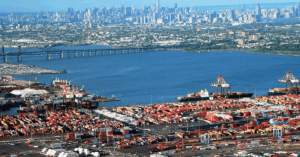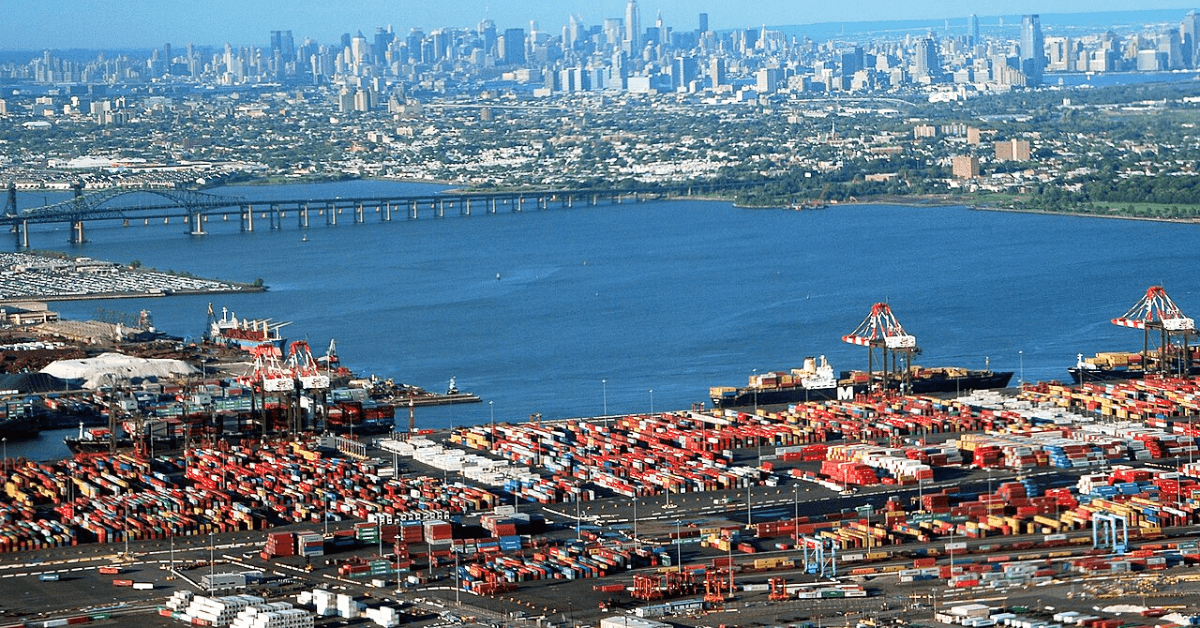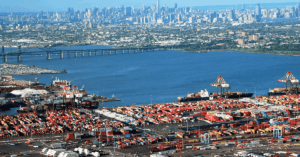
U.S. Navy Renames Ship Honouring Gay Rights Activist Harvey Milk
June 28, 2025
Cargo Ship Fire In Hull Sends Thick Smoke Across City, Shuts Roads & Businesses
June 28, 2025

The Port of New York and New Jersey has claimed the title of the busiest seaport in the United States for the month of May 2025, processing 774,698 TEUs (twenty-foot equivalent units).
This volume marks a 20% increase compared to May 2019, before the pandemic, although it is slightly lower, about 2%, than the volume handled in May 2024, which saw unusually high numbers due to cargo being rerouted from the Port of Baltimore after the collapse of the Francis Scott Key Bridge.
Officials say that the slight year-over-year dip was expected, as May 2024 had received diverted shipments following the temporary closure of Baltimore’s port. Despite this, the port’s performance in May 2025 saw a 3% increase in volume compared to April 2025.
From January to May this year, the Port of New York and New Jersey has handled a total of 3,729,611 TEUs. This is a 6.5% increase compared to the same five-month period in 2024 and a 22.6% rise over the same period in 2019, showing strong long-term growth.
Compared to its rivals, the port outpaced both the Port of Los Angeles, which moved 716,619 TEUs in May, and the Port of Long Beach, which reported 639,160 TEUs. While East Coast ports like New York and Savannah showed solid performance, West Coast ports struggled due to intensified U.S. tariffs on Chinese goods.
The Port of Savannah, Georgia, recorded its second-busiest May ever, handling 500,900 TEUs. It was the third month in a row that Savannah’s port crossed the half-million-container mark.
On the West Coast, port officials voiced concerns about trade policies, pointing to the negative impact of the new tariffs. The Port of Los Angeles experienced its first decline after 10 straight months of year-over-year growth, with cargo volumes dropping 5% compared to May 2024. The Port of Long Beach saw a larger fall, with volumes down by more than 8%.
Port authorities in California have expressed optimism that trade volumes will recover soon. On June 27, the U.S. and China confirmed an agreement on the first terms of a trade framework. The deal includes the easing of restrictions on technology and agreements around rare earth minerals.
According to U.S. officials, this is an extension of the earlier trade discussions held in Geneva and is seen as a “de-escalation” of ongoing trade tensions.
The two Southern California ports still lead in total TEUs handled so far in 2025. Both the Port of Los Angeles and the Port of Long Beach have each processed around 4 million TEUs between January and May, slightly ahead of the Port of New York and New Jersey’s 3.7 million in the same timeframe.
Meanwhile, other parts of the Port Authority’s network also showed strong performance. The PATH commuter rail system recorded its second-busiest month since the pandemic began, with a total of 5.4 million passengers in May 2025. This is a 7% increase compared to May 2024 and equals 75% of May 2019’s pre-pandemic ridership.
PATH’s weekday traffic averaged 205,305 passengers, maintaining over 200,000 for the second straight month. Weekend numbers were even more notable. Saturday ridership averaged 122,040, the second-highest May total ever, while Sundays averaged 94,616, the third-highest for the month.
Cumulatively, PATH carried 24.1 million passengers from January to May 2025. That’s a 7% increase over the same period last year, and now represents 72% of ridership levels in the first five months of 2019.
Reference: panynj
Source: Maritime Shipping News


